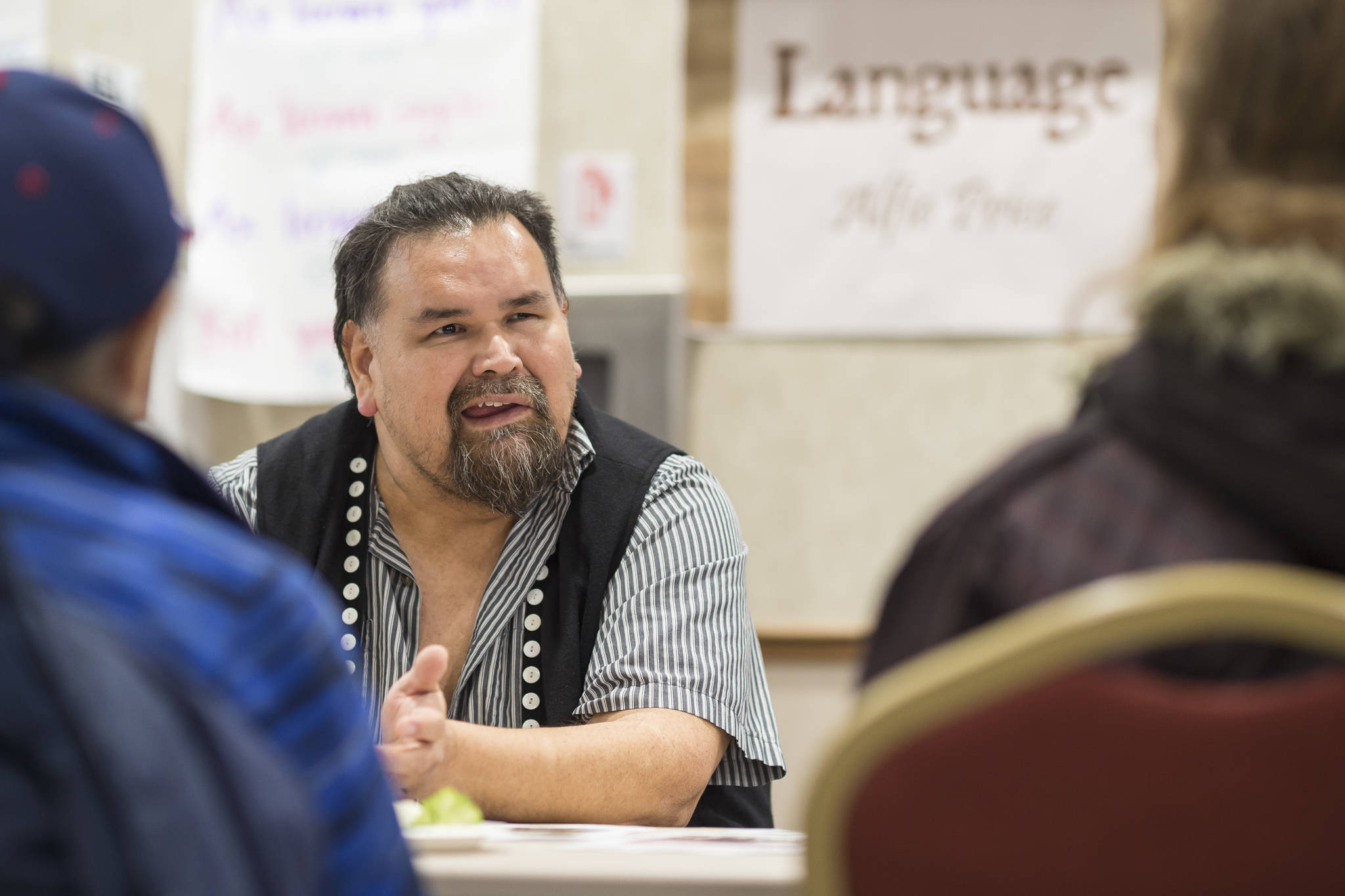Instead of a night of speeches, this year’s Celebrating Our Ways of Life embraced hands-on activities.
The Alaska Native Heritage Month celebration hosted by Central Council Tlingit and Haida Indian Tribes of Alaska featured a variety of stations for attendees to join and leave at their leisure Friday night at Elizabeth Peratrovich Hall.
“The planning committee thought this year it’d be nice to do demonstrations,” said Tlingit and Haida President Chaylee Éesh Richard Peterson. “It creates more of that connection. People are here talking about family history and beading. If you like weaving, there’s weaving. If you don’t like weaving, there’s formline or you can learn about bentwood boxes.”
Peterson said he was pleased that the event capped a week that included the three-day Voices of Our Ancestors Language Summit at Centennial Hall.
“When you put our language in the air, I think it creates an energy and lifts us all,” Peterson said.
Alfie Price’s station included words and sentences in Lingít, Sm’algyax and Xaat Kíl, the respective languages of Tlingit, Tsimshian and Haida people, written in large letters on the wall. Price is a regular attendee of local language learning groups for Tlingit, Haida and Tsimshian languages and three years ago helped start the Sm’algyax Learners Group.
“I never thought in my dreams I’d know the difference between transitive and intransitive verbs,” Price said.
He explained some of the rules of Sm’algyax grammar and verb conjugation.
For example, Price said sentences follow a verb, subject, object structure rather than English’s subject, verb object, which can be tricky to pick up on without a concentrated population of fluent speakers locally or globally.
“Only because we don’t have fluent speakers,” Price said. “Then, I could sit in a room and hear how it’s supposed to be and learn it.”
[PHOTOS: Celebrate Our Ways of Life]
Most other stations focused on arts and crafts, including beading, regalia, weaving and formline.
“I don’t know what I’m doing,” said Carley Jackson, secretary to the president for Tlingit and Haida, before starting a project at a station led by Selena Beierly.
About a half hour later, Jackson had completed the center of a flower and half a petal with beads.
“It’s easier than I thought, but I’m definitely out of practice let’s say,” Jackson said.
At his station, artist Robert Mills shared insights into formline, the distinctive Pacific Northwest art form that uses lines and shapes to form pictures. Mills showed some of the quick practice work he does to hone his skill and come up with ideas.
Mills said he was introduced to formline in high school and it gradually became the only thing he wanted to do.
“I think a lot of it has got to do with keeping you true,” Mills said. “You can’t cheat a design. It brings out the best in you.”
Artist John Garcia showed folks bentwood boxes in various stages of completion, including several smooth, finished boxes ready for paint. The boxes are a traditional Tlingit art form made by bending wood. The containers were historically used for storing food, ceremonial items and even in funeral ceremonies.
Each box is made of either red or yellow cedar, goes through at least 45 minutes of steaming and takes about 12 hours over three days to complete.
“I have a hard time painting them because the natural wood looks so good,” Garcia said.
Celebrating Our Ways of Life also marked the debut of a new music video for “Zibit” by Arias Hoyle of Juneau, who makes music under the name Air Jazz. Hoyle incorporates Lingít into his lyrics.
The song features Chris Talley, who makes music under the name Radiophonic Oddity. After its premiere, it was made available on Tlingit & Haida’s YouTube channel, Hoyle said.
The music video imagines all of Juneau as a series of museum exhibits.
“The lyrics manifest that same idea,” Hoyle said. “Most of the song is in English, but some of that is in Lingít.”

